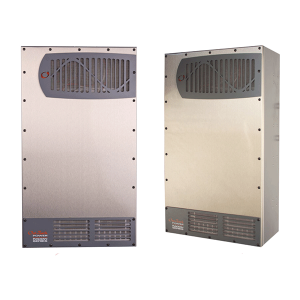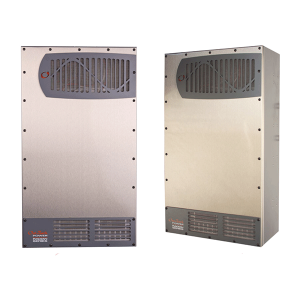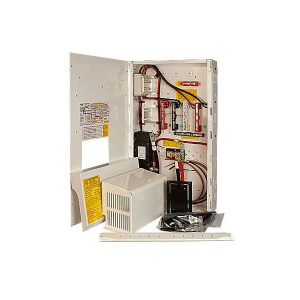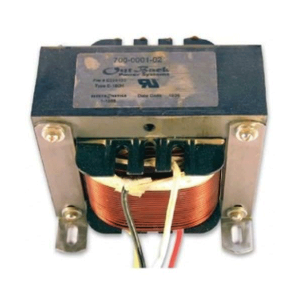If you’re a recent or first-time homeowner, it can be incredibly advantageous to learn about solar energy options. There are many benefits to be had when going solar—it’s clean, emission-free, and a great renewable energy source.
The many technical terms used to describe solar systems are the only deterrents you might encounter. We know it can be a lot to take in, especially regarding the different wiring methods involved.The wiring is important to learn about because it impacts the performance of your solar power system and how much energy you’ll save.
We’ll simplify things for you by explaining whether your solar panels should be wired in a series or parallel:
Differentiating Series & Parallel
The main difference between wiring solar panels in a series or parallel involves the output voltage and current. When wiring multiple solar panels in a series, the output voltages will add together, and their output current will remain the same. On the flip side, if you wire numerous solar panels in parallel, the output currents will add together, but the output voltages stay the same.
Let’s take a closer look at how to wire both options:
Wiring Solar Panels in a Series
Solar panels have two terminals, much like a battery—there’s one positive and one negative. When wiring solar panels in a series, you must connect the positive terminal on the first panel to the negative on the next. You should keep this pattern consistent to create a series of connections. The resulting voltage will be the sum of all the panel voltages in the series, but the total current will be equal to the output current on a single panel.
The voltage of the panels will add together when wired in a series, but the amperage will remain the same. For example, if you connect two panels with a voltage of 40 volts and an amperage of 5 amps, the voltage would then be 80 volts, while the amperage would still be 5 amps.
When you place panels in a series, it makes it so that the voltage of the array increases. This is integral as the solar power system needs to operate at a specific voltage for the inverter to work properly. Connecting the solar panels in a series will meet the operating voltage requirements of your inverter.
Wiring Solar Panels in Parallel
When wiring panels in parallel, you’ll connect the positive terminal from one panel to the positive terminal of another. You’ll then connect the negative terminals of the two panels. You can use a combiner box to connect the positive wires and then the negative wires to the negative connector. When you have multiple panels wired in parallel, it’s referred to as a PV output circuit.
Wiring solar panels in parallel will cause the amperage to increase, while the voltage remains the same. For example, if you took the same panels with a voltage of 40 and an amperage of 5, the voltage of the solar energy system would stay at 40, but the amperage would increase to 10 amps.
With parallel connections, you have more solar panels that provide energy without exceeding the operating voltage limit of the inverter. Inverters can also have an amperage limit when you wire solar panels in parallel.
Comparing Series & Parallel
Various factors can impede how your panels work. When it comes to solar panels in a series, they work better in conditions where there isn’t a lot of shade. If shade happens to cover just one portion of your series panel array, the entire power output can grow faulty.
Series
Series solar panels are a better choice if you require a low-amp system. You can use smaller gauge wires with a lower amperage, as they’re easier to use and generally less pricey. Calculate the power output by multiplying the voltage by the current. If you have a higher voltage system, your amperage will be lower.
When it comes to series vs. parallel, you’ll need to consult your charge controller to get the results you need. You can use a Maximum Power Point Tracking (MPPT) charge controller when wiring solar panels in a series and a Pulse Width Modulation (PWM) charge controller when wiring in parallel.
It’s pivotal you only use an MPPT charge controller when wiring your panels in a series. They regulate the voltage and current from the solar panels to match the battery’s voltage without draining power. If you use a PWM charge controller, the battery could pull the panel array voltage down to try and match it and result in you losing a good chunk of power.
Parallel
Solar panels in parallel can operate independently of one another and work best in areas with a mix of sun and shade. Unlike solar panels in series, parallel panels will continue to generate power even if one or more portions are covered by shade.
Parallel solar arrays are ideal if you want a lower-voltage system because wiring more than one solar panel won’t change the total output voltage. If your panel output matches your battery’s nominal voltage charge, a series array can allow you to increase your output charging current without having to regulate the voltage.
The wiring and effectiveness of solar panels can also depend on the type of inverter utilized.
Using a String Inverter
A string inverter is connected by a string of solar panels called a solar array. There are numerous ways you can connect a string of solar panels, but a typical solar array consists of roughly 15 panels.
An inverter can combine all the direct currents from each separate solar panel and convert them into an alternating current all at once. The number of solar panels you can connect to a string inverter will depend on its input voltage rating.
String inverters require a rated voltage window and a rated current to function properly. They also have maximum power point trackers that can influence the current and voltage to produce the most amount of power possible.
Most string inverters have an operational voltage window between 300 and 500 volts, while most solar panels have around 40 volts. You could theoretically design a solar power system with 8 to 12 panels in a series. If you add too many, you could exceed the maximum voltage of the inverter, which is not a good thing. However, most solar panel systems have more than 12 panels. If you want more panels in the system, you’ll need to wire another series and connect them in parallel. Then you will have the correct amount of panels to meet your energy needs without exceeding the limit of your inverter.
Which Wiring Method Is the Better Choice?
When it comes down to which wiring method is the best choice, it has to be a parallel connection. Parallel systems provide continuous operation of the panels, even if shade covers a portion of the setup or if one of the panels begins to malfunction.
But parallel connections don’t always work for every application. There might be a voltage requirement that you need to meet for your inverter to operate correctly. If you want your solar array to offer peak performance, you may need to strike a balance between voltage and amperage. That’s why a professional solar installer will design an array that’s a hybrid with both series and parallel connections.
You can also implement series-parallel connections when grouping panels together. When you group a panel, whether it’s 2, 10, or 100, you’re creating a string. Anytime you create a series-parallel connection, you are paralleling 2 or more equal strings together. This option is helpful when others aren’t available or don’t seem to work.
Are You Able To Add More Solar Panels to Your System?
You can consider adding more panels if you have an unlimited budget and you want to go all out with your solar power system. The important thing to remember is that you should determine the costs of your system and the amount of power it will need. Use a solar calculator to help you estimate the right number of panels you should have.
While we recommend implementing a full solar installation from the start, you can always consider expanding your system later. Sometimes people over or underestimate how many panels they need. You can always design a solar power system with room for expansion in the future.
If you’re planning to add more panels down the road, you should look into an oversized inverter to accommodate your growing power system.
Do Microinverters or Optimizers Make a Difference?
Microinverters and optimizers are an alternative for maxed out existing string inverters. You can rely on microinverters/optimizers to avoid the size limitations that string inverters possess. If you connect each solar panel to its own microinverter, you can expand your system one panel at a time.
Connecting Solar Panels to the Grid
Another factor to consider when choosing between wiring options is the number of wires you’ll be using to connect the solar system to the grid. A series-wired circuit uses a single wire to connect, whereas a parallel-wired system uses multiple wires to connect to the grid.
Making a Decision
The crucial point to make note of is that wiring in a series will increase your voltage, while wiring in parallel increases your amperage. These are the two main factors when considering how you design your solar power system. Furthermore, you’ll also need to find an inverter that works best for your solar setup.
Both options have their positives and negatives (no pun intended), so there isn’t a wrong or right answer when coming to a conclusion.
Want to learn more about wiring options and off-grid solar systems? Contact our knowledgeable team at SRB Energy Canada today. We’ve always believed that solar power has something to benefit everyone, which is why we strive to provide customers with high-quality solar panel products. Whatever you’re looking for, we have an extensive selection of panels, inverters, charge controllers, batteries, e-panels, RV kits, and more.




